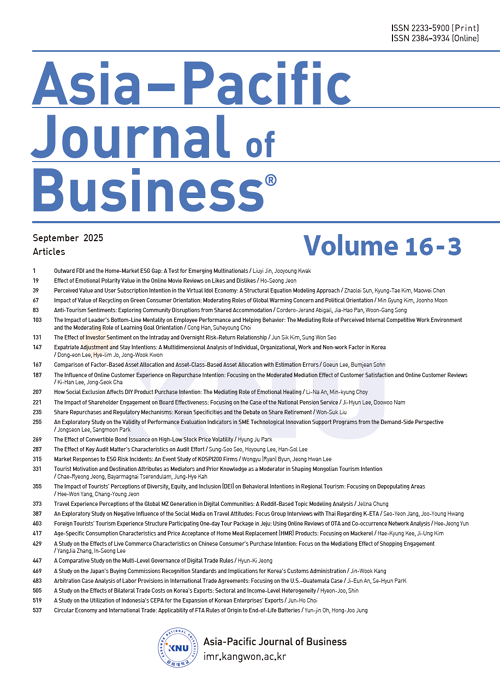Perceived Value and User Subscription Intention in the Virtual Idol Economy: A Structural Equation Modeling Approach
- 강원대학교 경영경제연구소
- 아태비즈니스연구
- 제16권 제3호
-
2025.0939 - 65 (27 pages)
-
DOI : 10.32599/apjb.16.3.202506.39
- 0

Purpose - Virtual idols are profoundly reshaping the global entertainment and commercial markets as an emerging product that combines technology and culture. To build a sustainable business model for virtual idols, it is essential to investigate the mechanisms influencing this model. Design/methodology/approach - This study systematically explores the key factors affecting users’ subscription intentions by examining virtual idol characteristics, netizen traits, and content features, and conducts empirical analysis using Structural Equation Modeling(SEM). Findings - The results reveal that perceived value plays a central mediating role in forming users’ subscription intention. Specifically, homophily, exposure, prosocial interaction, sociability, self-congruity, creativity, and storytelling indirectly influence subscription intention through perceived value, while attractiveness has a limited direct impact. This study highlights the critical role of self-congruity, prosocial interaction, creativity, and storytelling in shaping perceived value, underscoring perceived value as a key determinant of user subscription intention. Research implications or Originality - This research not only enriches the theoretical understanding of user behavior in the virtual idol context but also provides practical insights for content design and market operation in the virtual idol industry. The findings offer valuable references for virtual content creators, entertainment media companies, and related platforms in developing strategic plans, optimizing user relationship management, and improving content creativity. Moreover, the study provides data support and theoretical guidance for cultural industry policymakers to promote the standardized development of digital cultural content.
Ⅰ. Introduction
Ⅱ. Literature Review
Ⅲ. Research Methods
Ⅳ. Results
Ⅴ. Discussion
References
(0)
(0)